

Sans titre. Dating Sims. Search results for 'dating sim' Avatar (hindouisme) Sans titre. Transreal. Otherkin. A regular {7/3} heptagram known as the Elven Star or Fairy Star is used by some members of the otherkin subculture as an identifier.[1] Description[edit] With regard to their online communities, otherkin largely function without formal authority structures, and mostly focus on support and information gathering, often dividing into more specific groups based on kintype.[9] There are occasional offline gatherings, but the otherkin network is mostly an online phenomenon.[9] Some otherkin claim to be especially empathic and attuned to nature.[6] Some claim to be able to shapeshift mentally or astrally, meaning that they experience the sense of being in their particular form while not actually changing physically.[1][11] The therian and vampire subcultures are related to the otherkin community, and are considered part of it by most otherkin, but are culturally and historically distinct movements of their own, despite some overlap in membership.[1] Etymology[edit]
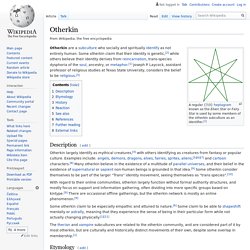
Narcisse (mythologie) Certaines informations figurant dans cet article ou cette section devraient être mieux reliées aux sources mentionnées dans les sections « Bibliographie », « Sources » ou « Liens externes »(novembre 2016).

Améliorez sa vérifiabilité en les associant par des références à l'aide d'appels de notes. Selon une autre version, rapportée par Pausanias, Narcisse avait une sœur jumelle qu'il aimait beaucoup ; quand la jeune fille mourut, il se rendit tous les jours près d'une source pour y retrouver son image en se regardant lui-même dans l'eau limpide. Il se consolait en retrouvant dans son reflet les traits de sa sœur. Cette version est une tentative d'interprétation rationaliste de ce mythe.
22 Hottest Lara Croft Cosplay. With the advent of a new Tomb Raider game called “Shadow of the Tomb Raider” this month, Lara Croft’s popularity is bound to soar once more.

This is a perfect chance for cosplayers around the world to show off their skills with a Lara Croft cosplay. There is also no doubt that Lara Croft has become so much more than just an objectified character, especially with her recent iterations where she is shown as an efficient hunter/assassin of her sworn enemy, Trinity. Indeed she has gone a long way from her last game “Rise of the Tomb Raider” back in 2015. Sans titre. Sans titre. Best Drag Queen Entrance EVER! Sex In Second Life. Second Life Geography IMPORTANT: THIS ARTICLE IS MADE ONLY FOR GEOGRAPHIC REASONS, since about 20% of Inhabited Land is used for sex and related activities.

The article MUST remain in a way that it's not aggressive for any resident. Please, don't upload explicit pictures here and try to avoid listing explicit names of places. Keep in mind that this might harm others. Racism in Second Life? - Lifestyles and Relationships - Second Life Community. Profile / Twitter.
(20) Frosted Flakes (@frosted_flakes) / Twitter. Sans titre. Sans titre. Furry convention. The Dealers Den and fursuit parade at Anthrocon 2006 A furry convention (also furry con or fur con) is a formal gathering of members of the furry fandom — people who are interested in the concept of fictional non-human animal characters with human characteristics.
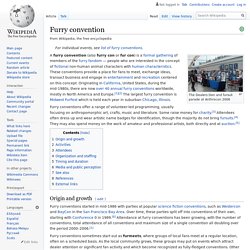
These conventions provide a place for fans to meet, exchange ideas, transact business and engage in entertainment and recreation centered on this concept. Originating in California, United States, during the mid-1980s, there are now over 40 annual furry conventions worldwide, mostly in North America and Europe.[1][2] The largest furry convention is Midwest FurFest which is held each year in suburban Chicago, Illinois. Furry conventions offer a range of volunteer-led programming, usually focusing on anthropomorphic art, crafts, music and literature. Origin and growth[edit] Furry conventions started in mid-1986 with parties at popular science fiction conventions, such as Westercon and BayCon in the San Francisco Bay Area. Dōjinshi. Page from the doji-manga about Wikipe-tan, Commons-tan and Wikiquote-tan Dōjinshi (同人誌, often transliterated doujinshi) is the Japanese term for self-published works, usually magazines, manga or novels.
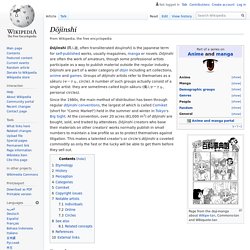
Dōjinshi are often the work of amateurs, though some professional artists participate as a way to publish material outside the regular industry. Dōjinshi are part of a wider category of dōjin including art collections, anime and games. Groups of dōjinshi artists refer to themselves as a sākuru (サークル, circle). Yaoi. Deux bishōnen qui s'embrassent, situation typique dans une œuvre yaoi. Le yaoi (やおい?) Groupe de l'an 24. Le Groupe de l'an 24 (24年組, Nijūyo nen Gumi?)
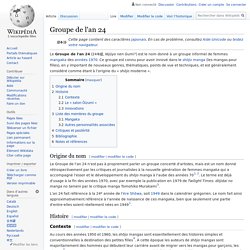
Est le nom donné à un groupe informel de femmes mangaka des années 1970. Ce groupe est connu pour avoir innové dans le shōjo manga (les mangas pour filles), en y important de nouveaux genres, thématiques, points de vue et techniques, et est généralement considéré comme étant à l'origine du « shōjo moderne ». Origine du nom[modifier | modifier le code] Le Groupe de l'an 24 n'est pas à proprement parler un groupe concerté d'artistes, mais est un nom donné rétrospectivement par les critiques et journalistes à la nouvelle génération de femmes mangaka qui a accompagné l'essor et le développement du shōjo manga à l'aube des années 70[1],[2].
Le terme est déjà d'usage à la fin des années 1970, avec par exemple la publication en 1979 de Twilight Times: dōjidai no manga no tameni par le critique manga Tomohiko Murakami[3]. Le Dit du Genji. Le Dit du Genji (源氏物語, Genji monogatari?
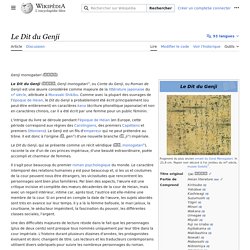
Kabuki. Le kabuki (歌舞伎?)

Est la forme épique du théâtre japonais traditionnel. Centré sur un jeu d'acteur à la fois spectaculaire et codifié, il se distingue par le maquillage élaboré des acteurs et l'abondance de dispositifs scéniques destinés à souligner les paroxysmes et les retournements de la pièce. Ladykiller in a Bind. Bara (genre) The use of bara as an umbrella term to describe gay Japanese comic art is largely a non-Japanese phenomenon; the term is not used within Japan, and its use is not universally accepted by creators of gay manga.
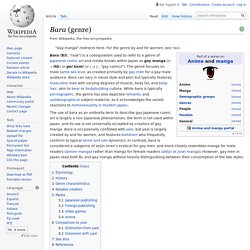
Bara is occasionally conflated with yaoi, but yaoi is largely created by and for women, and features bishōnen who frequently conform to typical seme and uke dynamics. In contrast, bara is considered a subgenre of seijin (men's erotica) for gay men, and more closely resembles manga for male readers (seinen manga) rather than manga for female readers (shōjo or josei manga). However, gay men in Japan read both BL and gay manga without heavily distinguishing between their consumption of the two styles. See also: Gay pornography in Japan (in Japanese) and Gay magazines in Japan (in Japanese) Gay manga often features masculine men with varying degrees of muscle, body fat, and body hair. Gengoroh Tagame is regarded as an influential creator and historian of gay manga. Bigfingers : For your Enjoyment. Yukio MishimA. Tatsumi Hijikata.
Tatsumi Hijikata (left) and Sada Abe (right) in 1969. Tatsumi Hijikata (土方 巽, Hijikata Tatsumi, March 9, 1928 – January 21, 1986) was a Japanese choreographer, and the founder of a genre of dance performance art called Butoh.[1] By the late 1960s, he had begun to develop this dance form, which is highly choreographed with stylized gestures drawn from his childhood memories of his northern Japan home. It is this style which is most often associated with Butoh by Westerners. Life and Butoh[edit] Tatsumi Hijikata was born in 1928, March 9 in the Akita region of northern Japan, the tenth in a family of eleven children, as Yoneyama Kunio.[2] After having shuttled back and forth between Tokyo and his hometown from 1947, he moved to Tokyo permanently in 1952, the year in which the American Occupation of Japan ended.
Hijikata conceived of Ankoku Butoh from its origins as an outlaw form of dance-art, and as constituting the negation of all existing forms of Japanese dance. Pompes funèbres - Jean Genet.